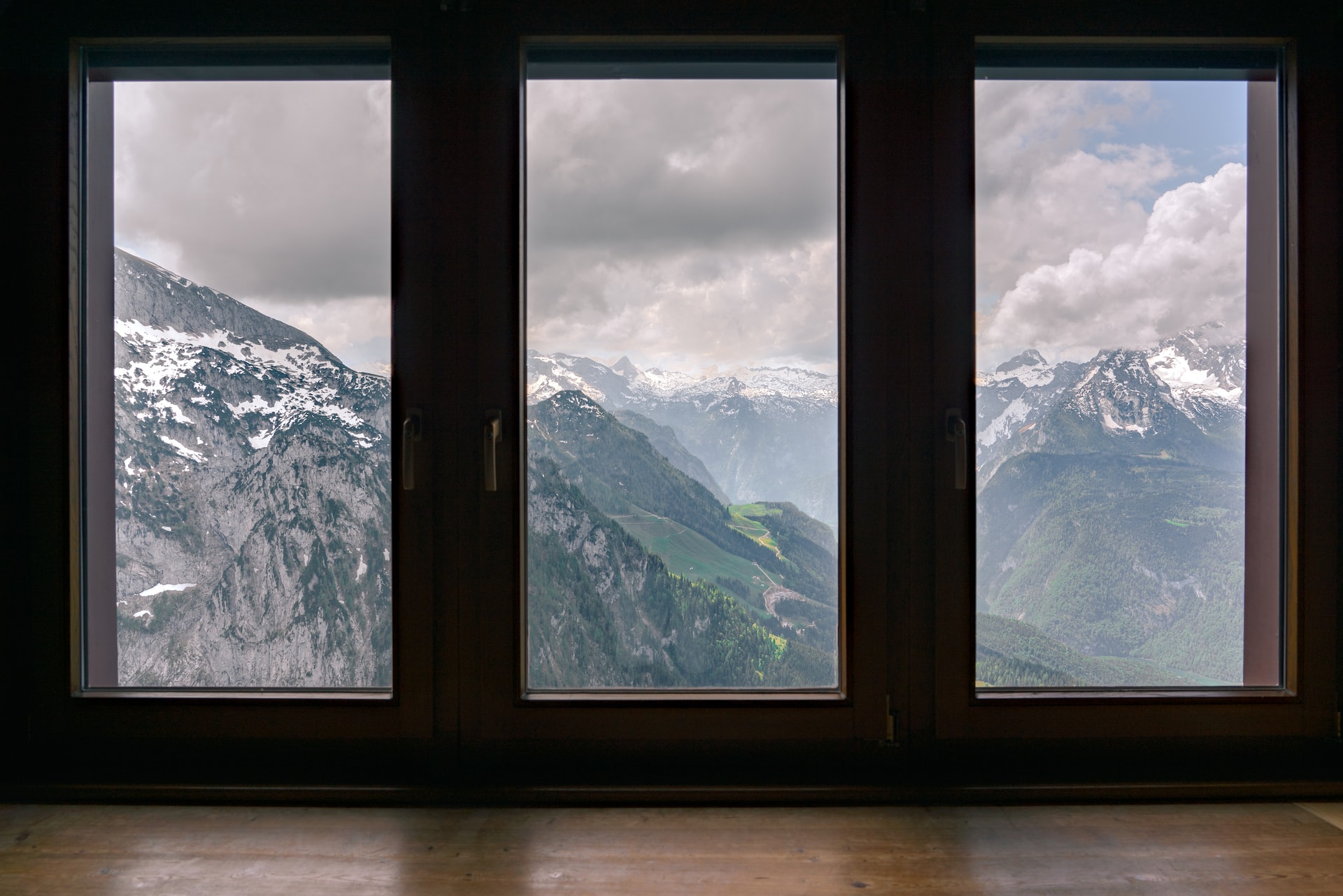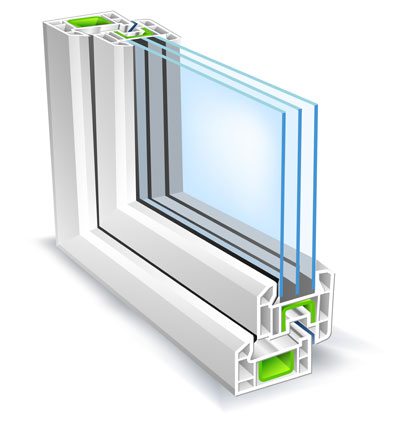
Table of Contents
Introduction
The search term noise cancelling windows is meaningless without knowing what noise issues you have. What good are any noise cancelling windows without knowing what noise they are supposed to “cancel”. With any noise issue, you must first measure the noise that is the issue. A noise cancelling window is really a barrier between the noise source and the receiver (you).
Any barrier design must be designed to attenuate certain frequencies and not others. This is why you must know the frequency and amplitude of all noise before you search for noise cancelling windows or any other barrier type such as a door. Searching for noise cancelling windows has no value without noise numbers to go by.
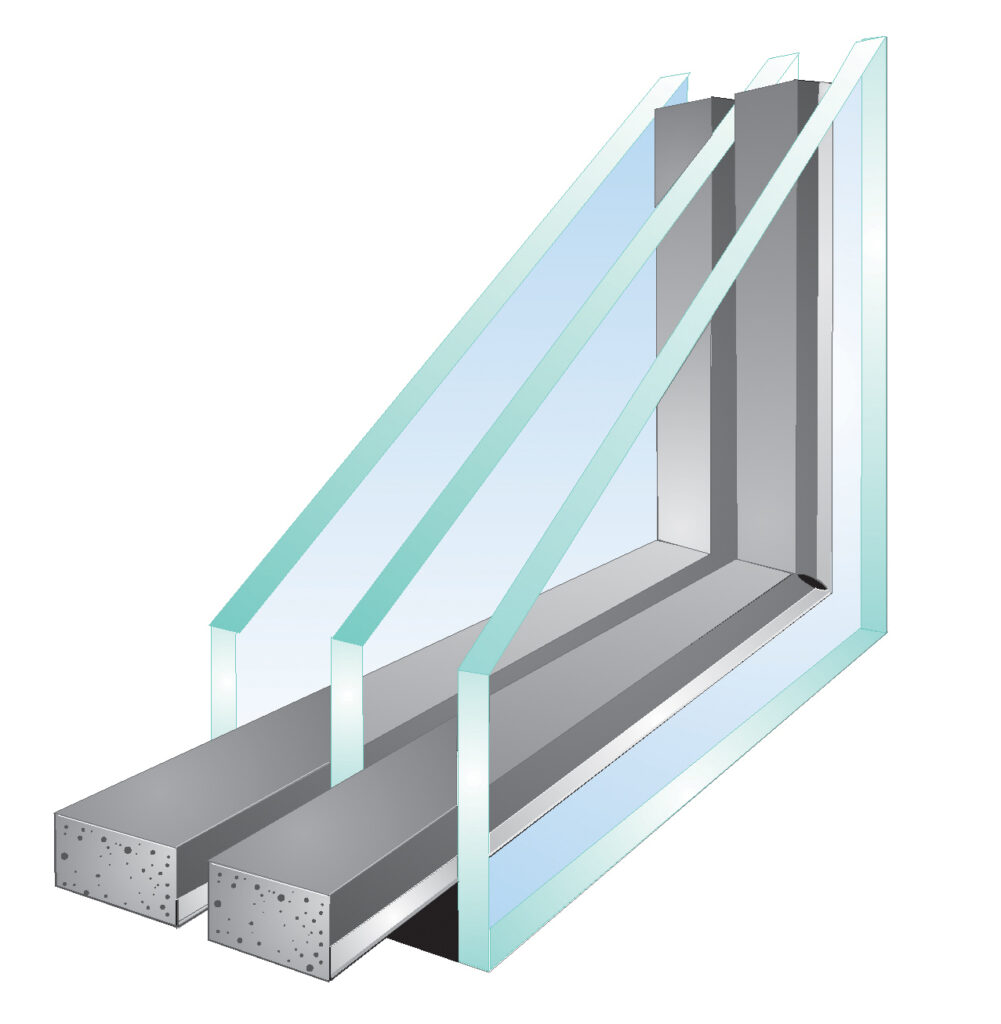
Mobile Noise Measurement
Noise numbers can easily be taken with any cell phone. At Acoustic Fields we have a noise measurement process where you use our apps on your phone and take frequency and amplitude measurements twice a day over one week. You will measure during the quietest part of the day and the loudest part of the day. You will measure the frequency of the noise.
This is where the noise is positioned on the human hearing spectrum. With the frequency or location comes the amplitude or strength of the noise. The strength and where it lies on our hearing range determines what barrier must be built in order mitigate the impact of the noise. Once we have the noise numbers measured over a week we can begin the design process.
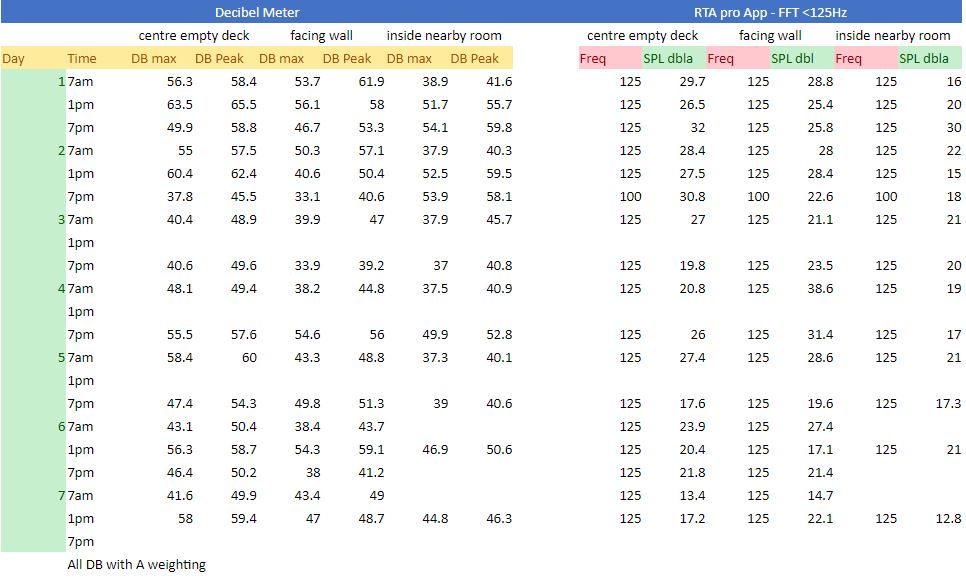
7-Day Noise Number Analysis
We must have noise numbers over a complete seven day period. We need to see the noise numbers throughout a week so we can locate the lowest frequency of noise along with its amplitude or strength. Noise transmission treatment issues are divided into two main frequency ranges. Frequencies and amplitudes below 125 hz. require a dramatically different barrier type than noise frequencies above 125 hz.
The material types used within the barrier design along with their density and construction methodology all contribute to reducing the transmission of vibrations which is really what noise attenuation is. It is all about reducing the vibrational signature of the wall or shell of your building or room.
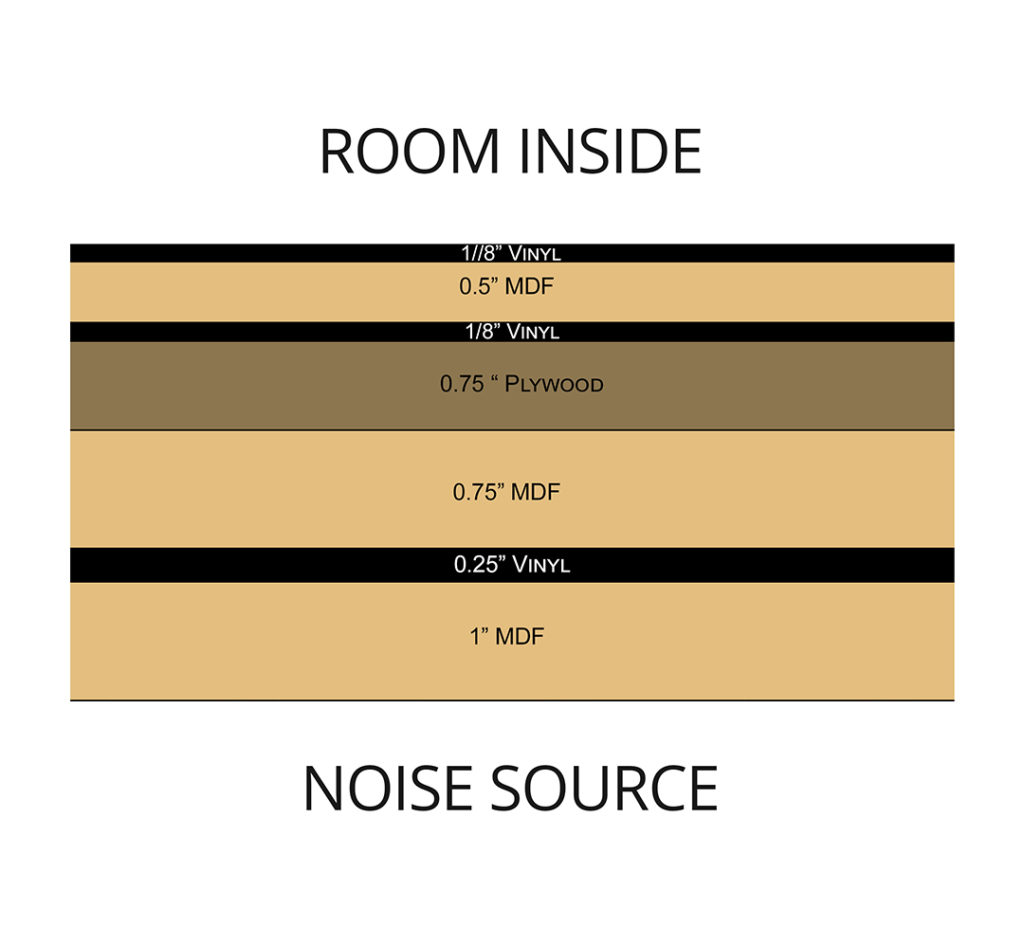
Once we have a week’s worth of noise data, we can begin the design process. The noise numbers tell us what material type to place first in our sandwich barrier design process. Using on average a 2″ x 8″ stud construction we create a series of noise sandwiches. We build these multiple layer sandwiches as a production unit. We will need many to go completely across each wall along with the ceiling and possibly the floor.
The floor and ceiling issues are determined based upon the usage within the room. The materials used in each sandwich are based upon the measured noise numbers. The thickness or density of each material is determined based upon the frequencies of noise below 125 hz. Other material arrangements are dealt with different sandwich layers in different sandwich positions. A barrier is a permanent construction build. There are no wall hanging or noise cancelling windows that will solve a noise issue.
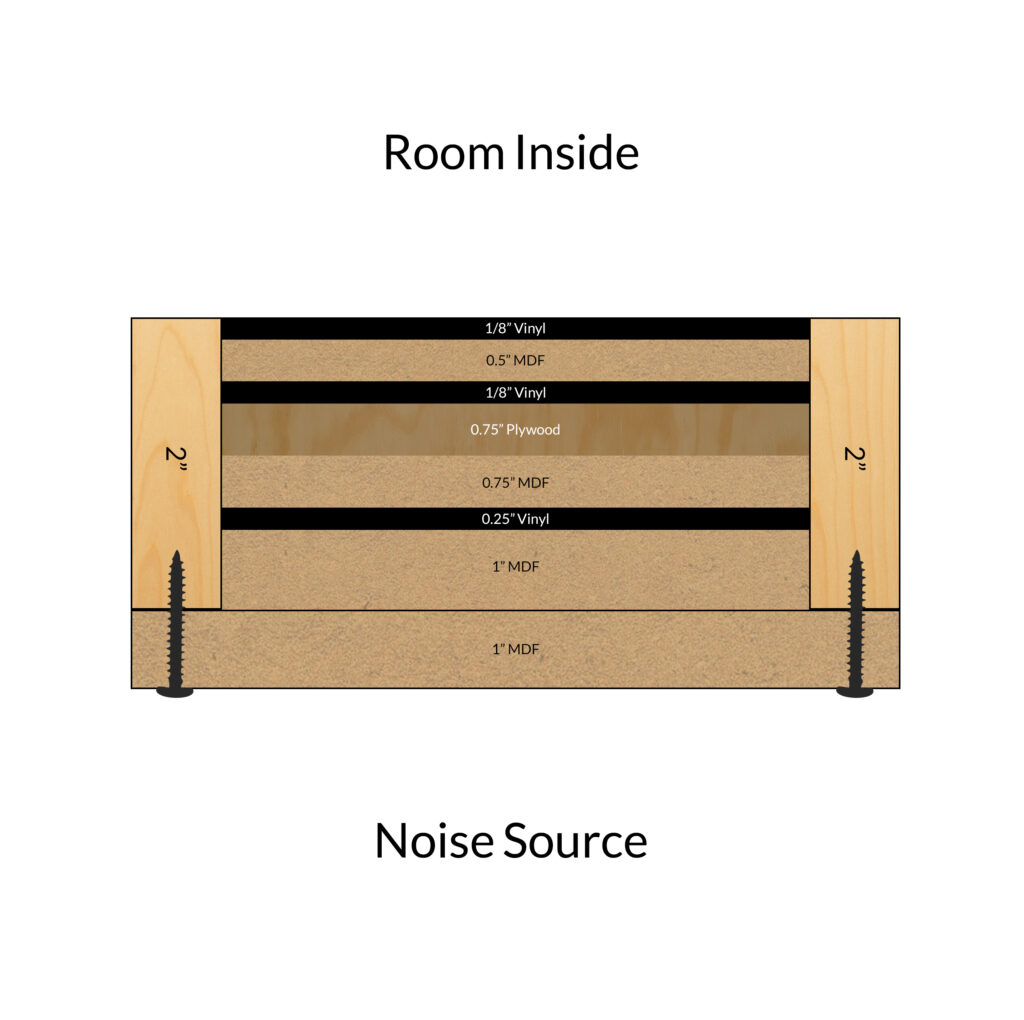
Penetrating Weak Points in Structures
Sound is like water. It will find the weakest link within a structure like a door or window and go right through the weakest link in the structure. All walls and structures have a certain density. Let’s use 10 lbs. / sq. ft. as our density number. If we add a door or a window to the 10 / lb. sq.ft. density wall, it too must have the same 10 lbs. sq. ft. density as the wall in which it is placed.
The same logic applies to a window. If you are using a noise cancelling window, you must use a window with the same density as the wall in which it will be placed. Remember, sound is like water. It will go through the weakest part of the structure.


